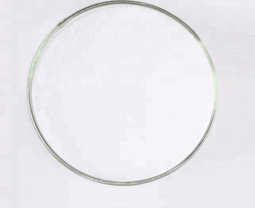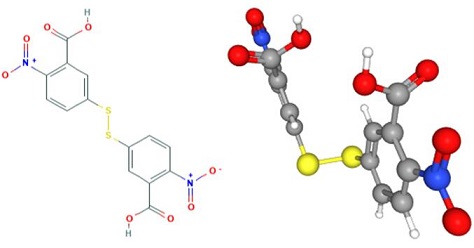Applications of Thiosemicarbazide
Nov 1,2019
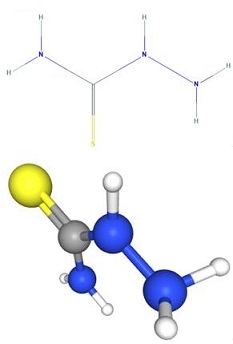
Thiosemicarbazide(1-Amino-2-thiourea,TSG) is a white crystalline powder and is odorless. It will dissolve in water. This material is used as a reagent for ketones and certain metals, for photography and as a rodenticide. It is also effective for control of bacterial leaf blight of rice. Not a registered pesticide in the U.S. It is a chemical intermediate for herbicides and a reagent for detection of metals. Compounds or agents that combine with an enzyme in such a manner as to prevent the normal substrate-enzyme combination and the catalytic reaction. Substances that act in the brain stem or spinal cord to produce tonic or clonic convulsions, often by removing normal inhibitory tone.
Thiosemicarbazides were formerly used to stimulate respiration or as antidotes to barbiturate overdose. They are now most commonly used as experimental tools. Thiosemicarbazide is used as a reagent to detect ketones and certain metals. It is used in photography. It is also an intermediate in forming a class of compounds that may be used as herbicides[1]. Thiosemicarbazide can be from breathing in dust or skin contact. If thiosemicarbazide is released to the environment, it will be quickly broken down in air. It will not evaporate from soil or water surfaces. It is expected to be highly mobile in soil. Thiosemicarbazide is not expected to build up in aquatic organisms. Breathing thiosemicarbazide can irritate the nose, throat and lungs. This can cause coughing and shortness of breath. Higher concentrations can cause a build-up of fluid in the lungs. High or repeated exposure may affect the nervous system. It could also affect the bone marrow causing low blood cell count, and reduced white blood cells and platelets. The potential for thiosemicarbazide to cause cancer in humans has not been assessed by the EPA IRIS program, the International Agency for Research on Cancer, or the U.S. National Toxicology Program[2].
Thiosemicarbazide is an odorless white crystalline powder or long needles from water. It is an intermediate for pesticides, especially herbicides, and pharmaceuticals; used in certain photographic and dye applications and used as a reagent for the detection of metals. Thioureas are potential sensitizing accelerators and antioxidants used in the manufacture of rubber which may cause irritant contact dermatitis. Subcutaneous injections of thiosemicarbazide into postnatal mice caused convulsions in mice when treated on the day 7 or later but not on the days 1-5. The latent period of the 1st convulsion was 115 min in mice injected on the day 7. The convulsions were inhibited by pyridoxine-HCL, but not by pyridoxal phosphate. GABAergic antagonists (Thiosemicarbazide) enhanced aggressive behavior and decreased the social behavior of mice. Thiosemicarbazide was noncarcinogenic in mice and rats. The agent was teratogenic in chick embryos when applied to the vascular area on the 3rd day of incubation at 0.5 to 1 mg it produced deformities of the wing and beak, but not harelip. Exposure of Rana sylvatica tadpoles to 25 mg/L or more caused a curvature of digits, abnormal limb articulations, difficulty in swimming, and death. Wood frog (Rana sylvatica) tadpoles were exposed to 50 mg thiosemicarbazide (TSC)/L water for varying lengths of time and at different developmental stages. Short exposure periods (3 and 6 hr) resulted in no visible deformities. Exposure periods of 12 or more hr caused slight to severe abnormalities, with a direct relationship between length of exposure and degree of deformity. Tadpoles exposed to TSC from posthatching Days 24-30 were more seriously affected than were tadpoles exposed at an older age[3].
References
[1] Sr R J L. Hawley's Condensed Chemical Dictionary, 15th Edition[J]. Wileys Scientific Technical & Medical Databases, 2007, 14(1):592-593.
[2] Greenstein G R. The Merck Index: An Encyclopedia of Chemicals, Drugs, and Biologicals (14th edition)[J]. Reference Reviews, 2006, 21(6):40-40.
[3] Anlezark G , Horton R W , Meldrium B S , et al. Anticonvulsant action of ethanolamine-o-SO4 and di-N-propylacetate and the metabolism of γ-aminobutyric acid (GABA) in mice with audiogenic seizures[J]. Biochemical Pharmacology, 1976, 25(4):413-417.
- Related articles
- Related Qustion
Mupirocin, an antibiotic, is used to treat impetigo as well as other skin infections caused by bacteria. It is not effective against fungal or viral infections.....
Oct 31,2019API5,5'-Dithiobis(2-nitrobenzoic acid) (DTNB)is an organic disulfide that results from the formal oxidative dimerisation of 2-nitro-5-thiobenzoic acid. An indicator used to quantify the number or concentration of thiol groups.....
Nov 1,2019Chemical Reagentsthiosemicarbazide
79-19-6You may like
thiosemicarbazide manufacturers
- N-Aminothiourea
-
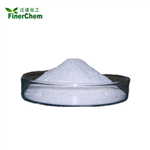
- $0.00 / 25Kg/Drum
- 2024-04-25
- CAS:79-19-6
- Min. Order: 1KG
- Purity: 99%
- Supply Ability: 200mt
- Thiosemicarbazide
-
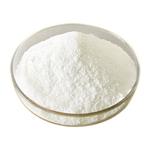
- $10.00 / 1KG
- 2024-01-14
- CAS:79-19-6
- Min. Order: 1KG
- Purity: 99%
- Supply Ability: g-kg-tons, free sample is available
- thiosemicarbazide
-

- $5.00 / 1KG
- 2023-03-06
- CAS:79-19-6
- Min. Order: 1KG
- Purity: 99%
- Supply Ability: 10 ton




